How to prune roses for a healthy plant, ripe for flowering
Learning how to prune roses properly will keep your English shrubs, Hybrid Teas and other flowering varieties looking gorgeous in growing season, adding a ton of quaint personality to your garden space. Prune hard once a year for best results
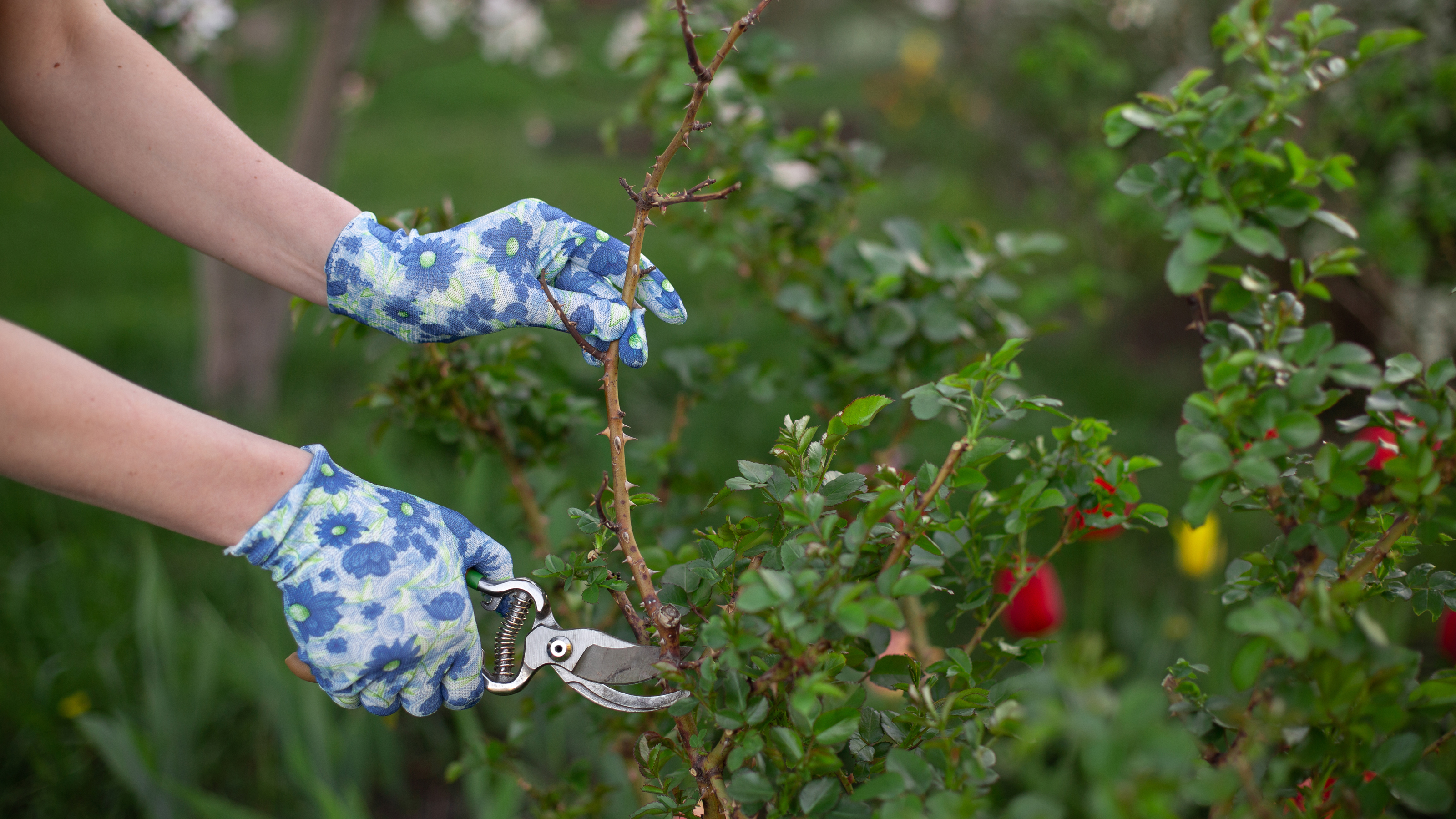

Anna K. Cottrell
The rose, Rosa, is one of the most recognizable flowers grown in our gardens. Heavily petalled, bearing fragrant flowers and thorns (lots of thorns), whatever type of rose you have, it’s a stunning and hardy plant that will bloom year after year – provided, of course, that you know how to prune roses properly.
While they don’t require much upkeep – a sunny spot, moist but well-drained soil – roses do need to be cut back on occasion. Removing a significant portion of the previous year’s (or even two years') growth helps direct the rose's energy, making way for new growth and for an even more stunning display come spring and summer. It’s an annual ‘event’ shall we call it, and in essence, pruning is a process of renewal that will allow your rose(s) to bloom bigger and better than ever.
There's a huge variety of cultivars out there, perfect for all types of rose garden and therefore, there are a few different pruning methods to consider. Our step-by-step will advise you more specifically on how to prune ‘English’ shrub roses that are repeat-flowering, but we also have a few tips for more unusual cultivars.
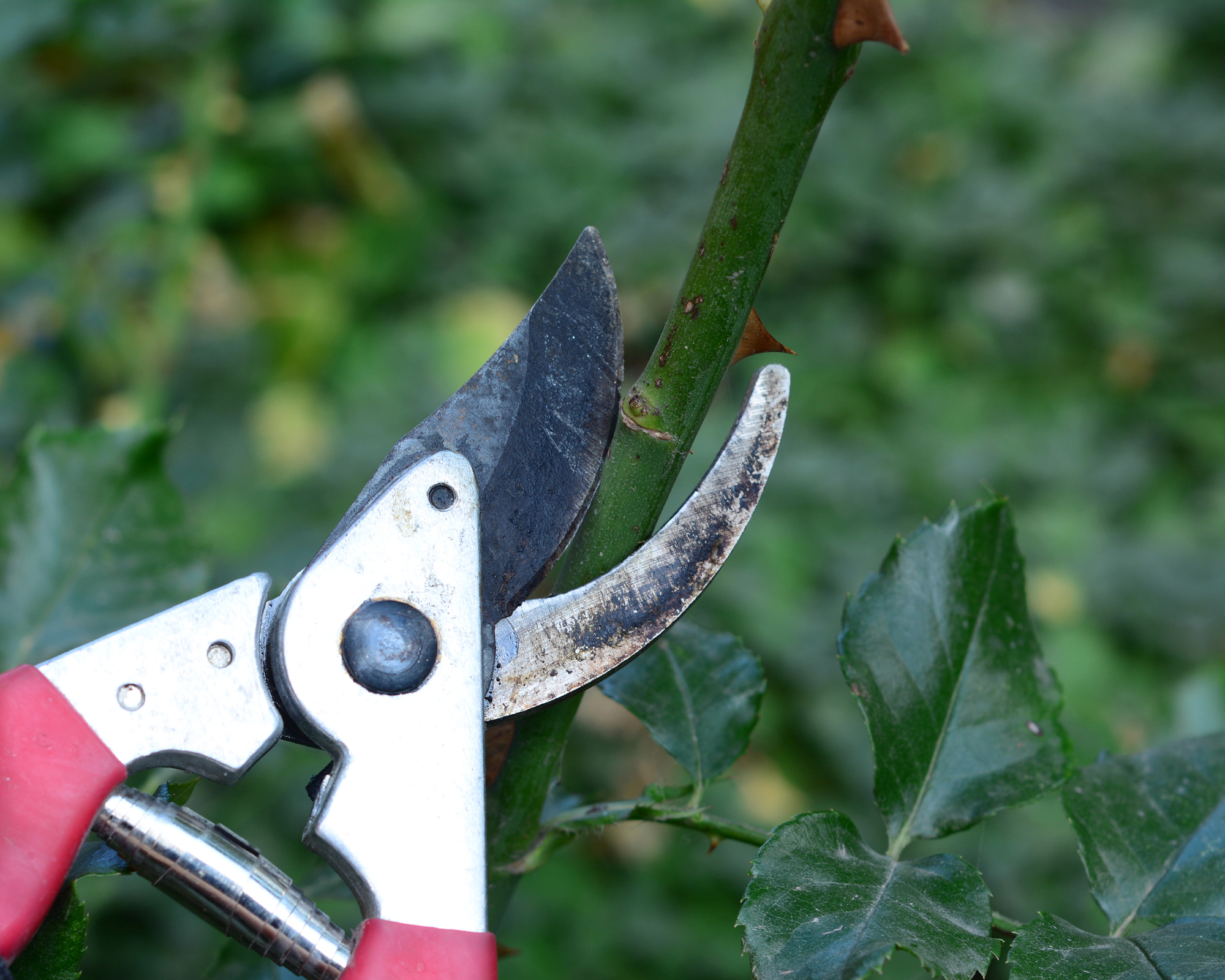
Pruning roses can seem tricky if these are new additions to your flower beds but it is actually pretty easy and totally worth it as pruning will improve the internal airflow of your plant, boosting overall plant health, giving you better flower quality and yield, not to mention allowing you to tidy up the bush to the desired shape to suit your garden scheme.
Plant expert, Debbie Neese from Lively Root notes how you should 'Prune for good air circulation, shape, and size of the blossoms'.
'When planting your roses, shape them and leave them until they mature in two or three years'. It's also majorly important to 'Use the right equipment: sharp hand clippers (bypass) or best secateurs, heavy-duty loppers, pruning saw, leather gloves, or gauntlets that are long covering your wrist and arm' She continues. 'Prune roses that bloom once a year right after they bloom. They will bloom on old wood the following year.'
When should you prune roses?
You should prune roses between February and March. This is considered the dormant season, which is late winter. As it’s recommended that you wait until the final frost, you may need to prune closer to late March if you live in a climate with cold winters.
Whether you need to prune your roses ahead of winter really depends on the cultivar of rose you have and whether it gives a single flush of flowers through the year or if it is repeat-flowering so be sure to double-check.
How to prune roses: step-by-step
The general rule with pruning roses is removing about a third of the plant in any one year. Don't worry – your rose plant will regrow during the active season, pruning it is simply a way to make sure it's healthy and balanced.
Reducing the size of bush roses by about one-third, giving ground cover roses a light trim, and cutting back climbing roses after flowering to suit the structure they are covering may seem like a lot, but it will give the plant a clean and simple structure which will ultimately encourage fuller re-growth. In all, you want to achieve a balanced-looking plant with both older and younger wood.
There's a huge variety of roses out there, and therefore a few different methods for specific cultivars. What we cover can be applied to most roses, even the ones that you don't know the name of.
You will need:
1. A pair of pruning shears: we tend to use Felco's Model 12 secateurs
2. You may need loppers for more established roses
3. A thick pair of gardening gloves, Amazon has lots especially designed for tending to roses
4. Steel-toed boots – I like Dickies but Amazon has a good selection including Cat and Timberland
4. A pot or compostable garden refuse bags for the cuttings
1. Asses the shape of your rose
First off you want to assess the shape of your rose and determine how to create a healthy spread of stems with pruning and tidying. You want to be left with an open shape, about five main branches if working with a shrub, perhaps less if you have a hybrid tea rose but if established, it should be easy to determine the core stems holding the structure of your plant.
Try to identify whether it was pruned last season or not – if it wasn't yours to keep – and this will help with knowing how hard to prune.
2. Start with the 3 ds
When you're pruning a rose you want to start with the three D's: anything dead, dying or diseased. That means deadheading roses, removing any blackened branches and yellowed leaves, this will take off a significant portion of your plant already.
Be sure to use clean, sharp secateurs or loppers for bigger branches. And keep safety in mind with gardening gloves, steel-toed boots and safety glasses also.
When it comes to your pruning technique, always prune above outward-facing buds so that you direct the rose's growth externally for a beautiful more open floral display.
You also always want to cut at 45º, pointing away from buds to ensure water and debris runs off the plant as opposed to pooling inside buds and causing rot or disease. Neese notes how important this is 'Always cut at a 45° angle above the outside bud with sterilized, sharp bypass pruners.' Clean tools are essential to stop spreading disease among your plants.
3. Prune crossing or inward growing stems
Next, you want to chop off any stems that are crossing or that have become leggy and that are growing inwards. It may seem radical but by keeping these small branches will waste the plant's energy which you want to conserve so that it can instead be used to create healthier branches and flowers in spring and summer.
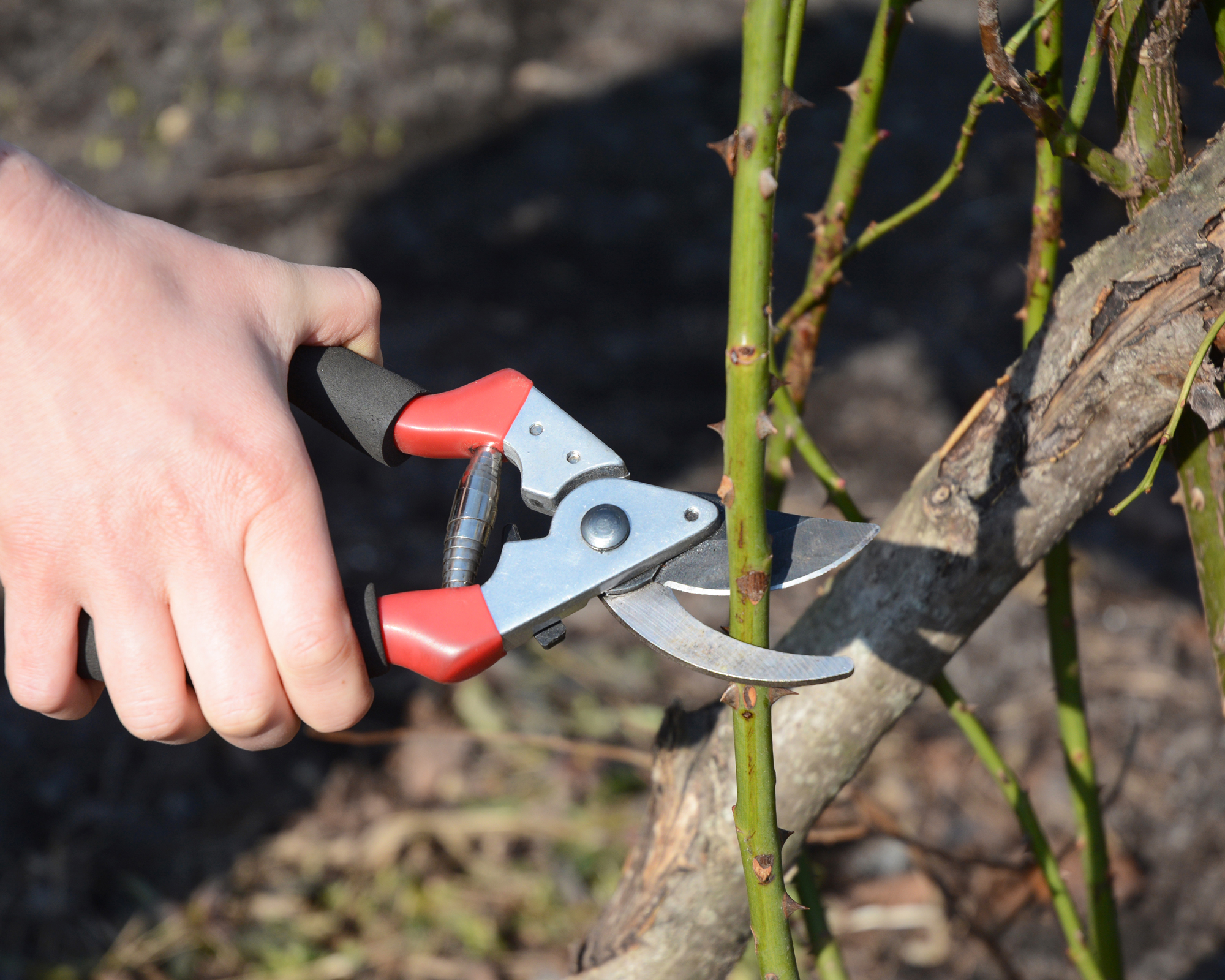
4. Reassess the shape
Whether you're pruning roses or a shrub, taking a step back and looking at your work after a few steps will help you evaluate the shape and determine your next steps.
5. Tidy up
Once you've seen what's left to do, ensure you've snipped off any suckers in the ground – these will sap a lot of your plant's energy – and do any last bits of tidying, using your secateurs for more precision, to leave your rose plant with that gorgeous open shape that may look sparse now, but come spring and summer, will grow and flower beautifully.
How to cut back roses during their growing season
Cutting back refers to deadheading or light pruning during the active growing season – this prolongs the rose's flowering period and keeps diseases at bay. You should aim to remove spent flowers and snip off disease stems throughout the growing season. This is considered more of a ’tidy’ and the main thing to remember is that you should always cut above a leaf – this way, you will get more fresh growth and more flowers. A midsummer tidy-up will help reinvigorate tired roses and encourage a second flush in autumn with repeat bloomers.
The exception is rambling roses. These finish all their flowering sometime in mid to late summer (think July or August), so you can safely prune them as soon as they've stopped producing new flowers. You should also leave wild roses alone.
For more specific pruning advice on each type of rose refer to the RHS website, which lists the steps for different types of roses.
Pruning roses: what not to do
Most rose pruning mistakes are to do with incorrect timing. If you are pruning your rose in spring, Neese urges to 'avoid pruning too early after it comes out of dormancy and it's early in the spring season. Be sure you're past the last frost date since new growth will promote fresh tender leaves that can get nipped in a frost.' A rose that has been frost-bitten may get damaged and not produce any flowers that year.
At the same time, Neese explains that 'you don't want to prune too late in the season in cooler climates since the new growth won't have time to mature before the first frost of the winter.' So, don't prune your roses in the fall if your winter is guaranteed to be cold. You will confuse the plant – it will start producing new growth which can then get damaged during the winter.
As mentioned, don't prune wild roses, such as rugosas; they need no annual pruning, simply cut away the dead branches from the underside of the shrub every few years.
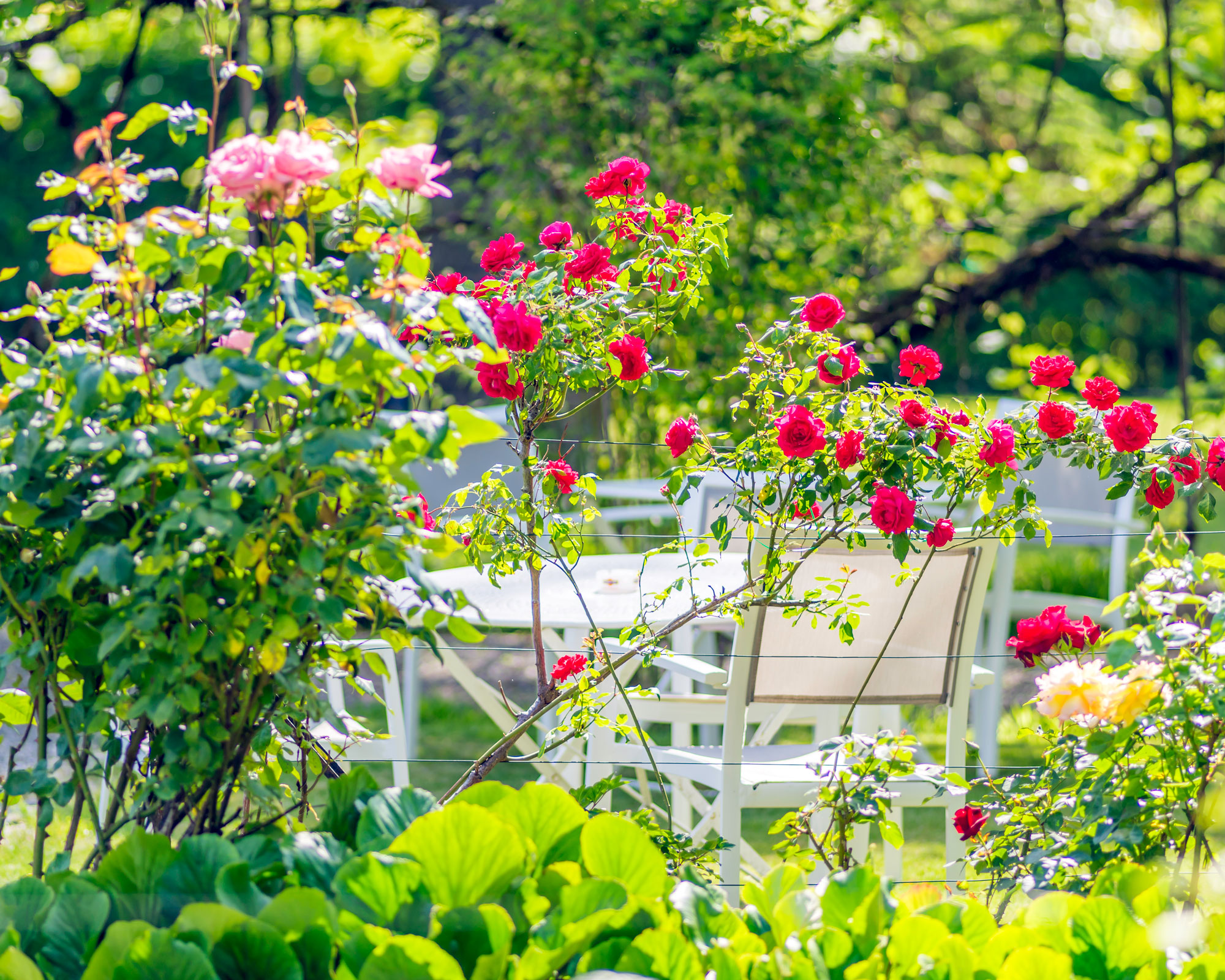
Do I have to prune roses?
If all of this sounds like a lot to remember, you may be tempted to just leave your roses be. In fact, you may have heard some gardeners say that they don't prune their roses at all and still get great results.
The trick here is to choose the correct variety of roses. According to Neese, if you don't want to prune, it's worth seeking out easy-care varieties like Knockout roses.' Knockout roses can be bought on Amazon, among many other places, and these cultivars naturally grow in a neat way. However, Neese still prefers 'to keep them in optimum health by pruning in late winter while the plant is still dormant to ensure the dead, damaged, and diseased branches are not taking away from the healthy stems.'
If you don't prune it, 'eventually, the rose will get too bushy and have issues with pests and diseases if not pruning for air circulation. The shape may get lop-sided or unsightly if the shrub has dead spots.'
Finally, 'flowers won't be as robust and showy if the shrub isn't pruned.' In other words, pruning roses is well worth the effort. Having said this, if you're growing wild roses such as multi-flora and Rosa rugosa, you don't have to prune them at all. According to Stuart MacKenzie, Master Arborist and Expert at Trees.com, points out that they 'thrive when neglected.'
Join our newsletter
Get small space home decor ideas, celeb inspiration, DIY tips and more, straight to your inbox!

I'm Cam, the former deputy editor of Real Homes who worked on the site from 2020 to 2023. As a renter myself, sharing a home with two friends (and my cat) in London, I know all too well the challenges that this can pose when it comes to creating your perfect setup. As someone who has always loved everything interior design-related, I cannot rest until a home feels right and I am really passionate about helping others get there too, no matter what their living situation, style, or budget may be. It’s not always the easiest to figure out, but the journey is fun and the results are so worth it.
After interior design, travel, art, and photography are my next big passions. When I’m not writing or editing homes content, I’m usually tapping into other creative outlets, exploring galleries in London or further afield, taking photos, scribbling, or drawing!
-
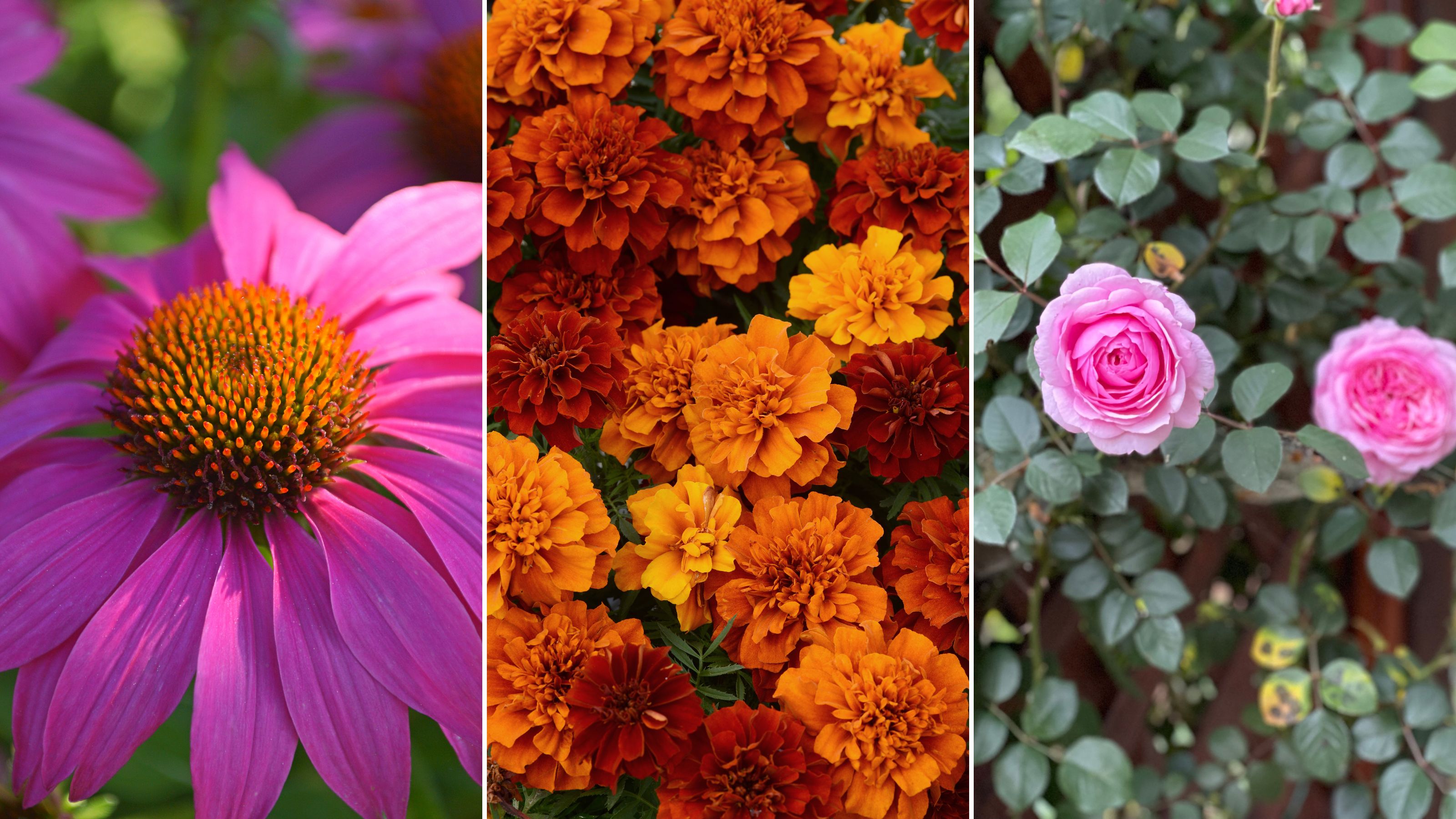 The 7 flowers to plant in August, according to gardening gurus
The 7 flowers to plant in August, according to gardening gurusKnowing what flowers to plant in August isn't always so clear-cut. But that's why we called in help from pro planters — here's what they said to pot.
By Becks Shepherd Published
-
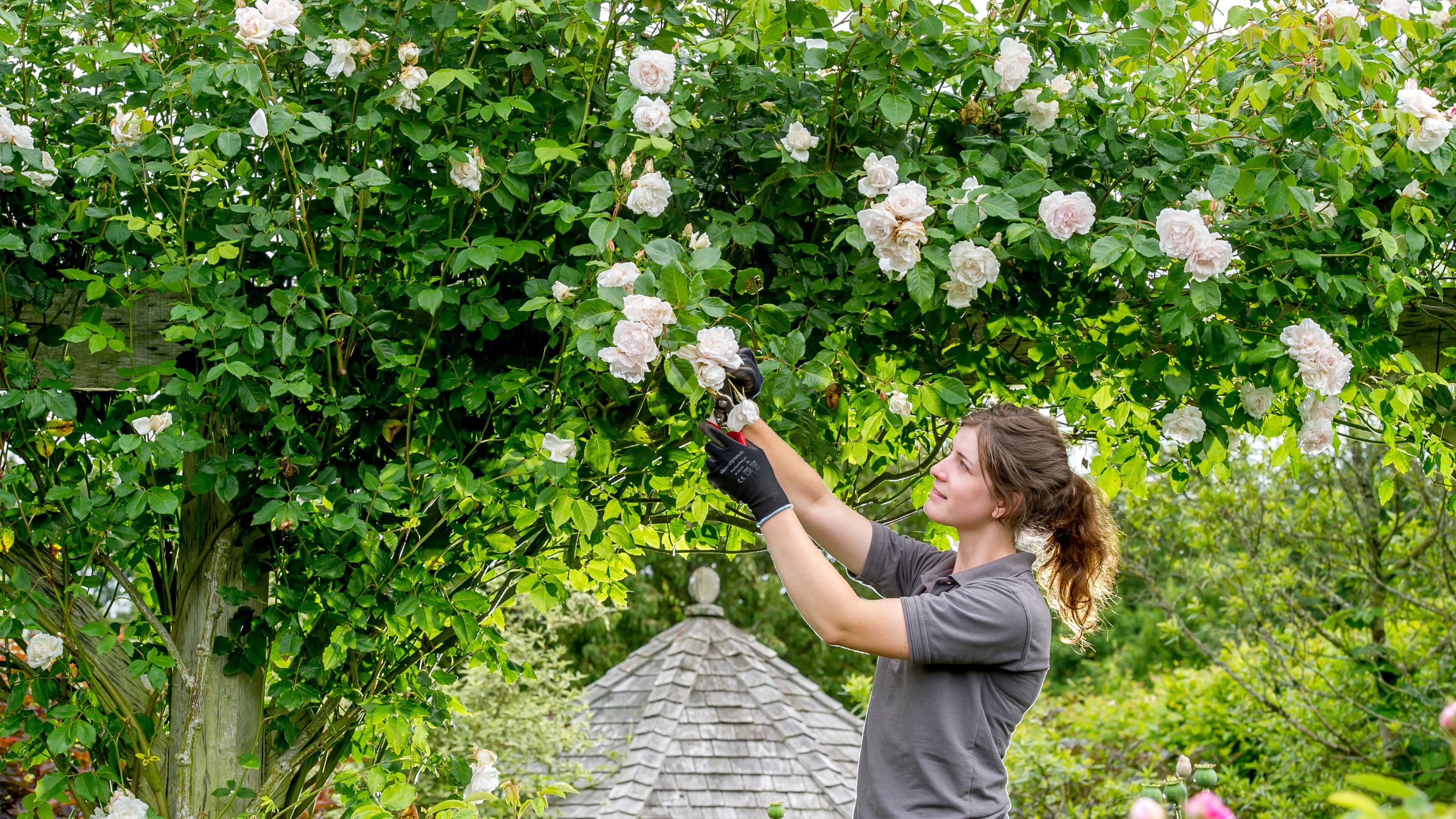 The 7 plants to prune in August — and the 2 pieces of greenery you shouldn't touch
The 7 plants to prune in August — and the 2 pieces of greenery you shouldn't touchWondering what plants to prune in August? We asked a gardening expert for their top tips plus info on what pieces of greenery to avoid pruning this month
By Becks Shepherd Published
-
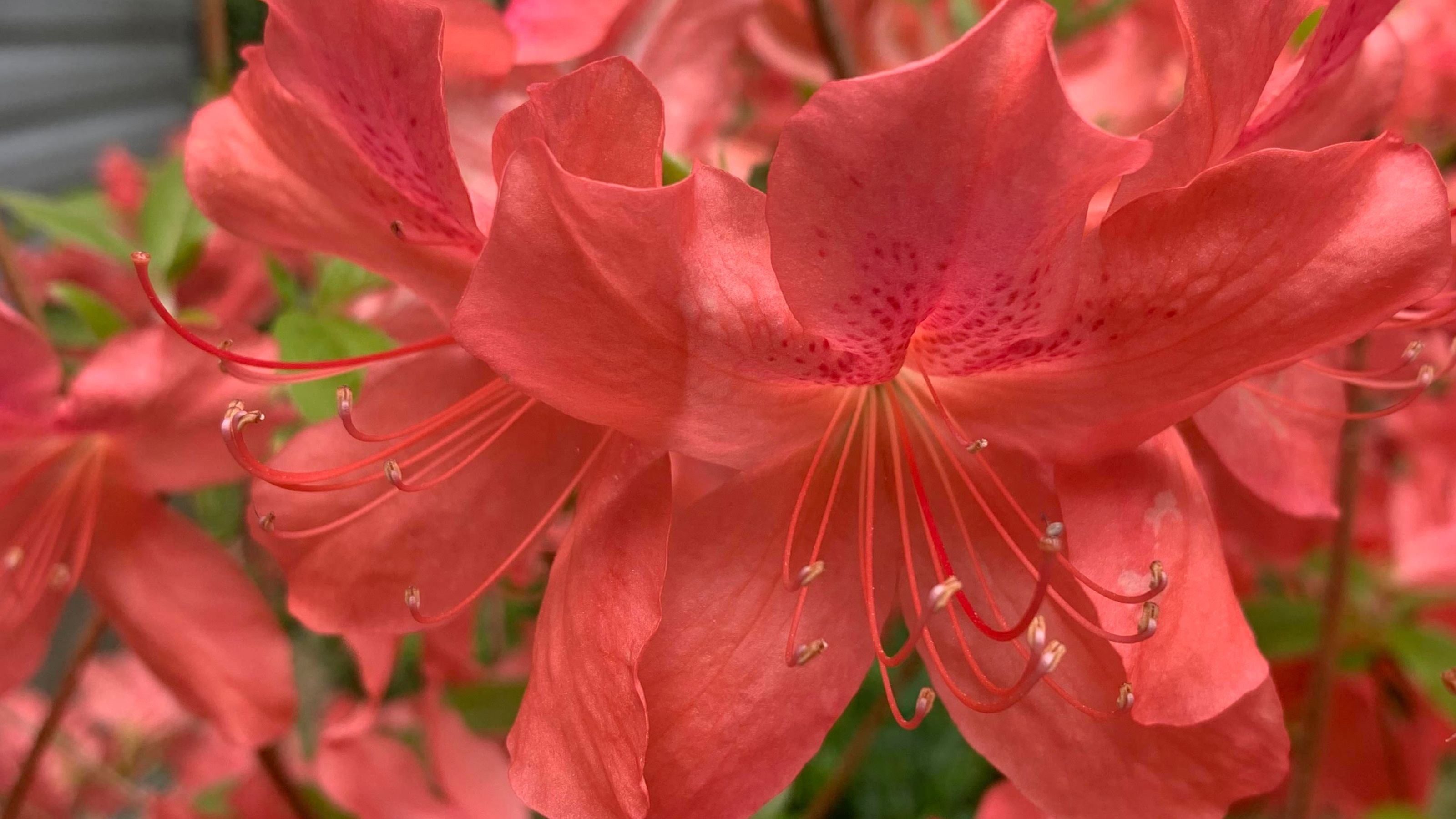 Do you need to deadhead azaleas? Top tips for pruning these flowering shrubs
Do you need to deadhead azaleas? Top tips for pruning these flowering shrubsWondering whether you need to deadhead azaleas? We asked a gardening expert for their top tips for looking after these blooms
By Becks Shepherd Published
-
 10 houseplants that are not toxic to cats — plus expert advice on keeping your pets safe
10 houseplants that are not toxic to cats — plus expert advice on keeping your pets safeKeep your four-legged companion safe by choosing these houseplants that are not toxic to cats, and learning the dangers of those that are, according to veterinary experts
By Holly Crossley Published
-
 Which houseplants are toxic to dogs? Vet experts pinpoint problem plants and solutions
Which houseplants are toxic to dogs? Vet experts pinpoint problem plants and solutionsWondering Which houseplants are toxic to dogs? We spoke to vets about the problematic leafy greens, what they trigger in dogs, and how to find a solution
By Danielle Valente Published
-
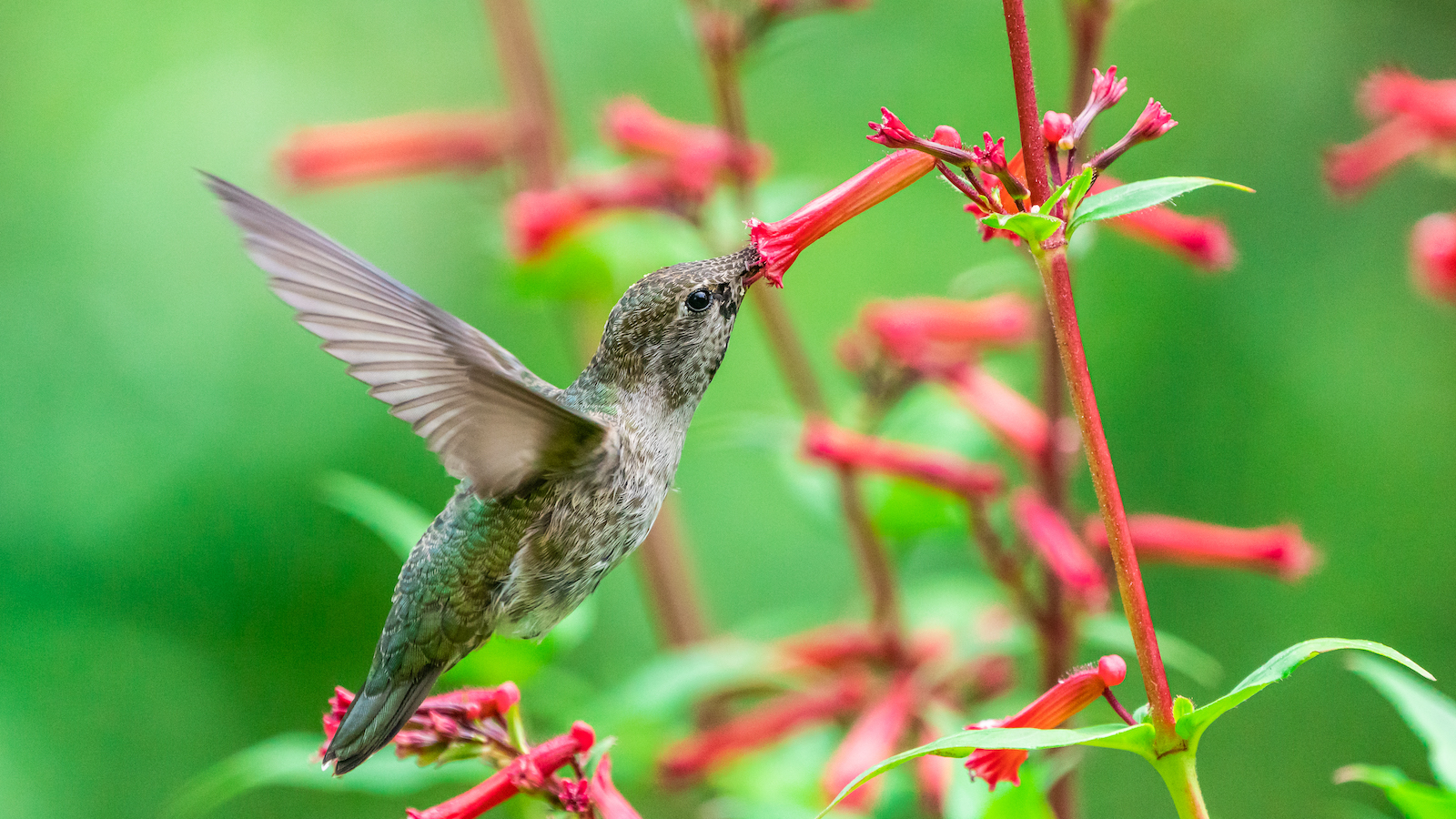 How to attract hummingbirds to your backyard, according to ornithologists
How to attract hummingbirds to your backyard, according to ornithologistsTrying to figure out How to attract hummingbirds to your backyard? These ornithologist-backed tips will guarantee you visitors in no time
By Danielle Valente Published
-
 Does hydrangea bloom every year? Pros spill the dirt on the "garden favorite" and when to expect it
Does hydrangea bloom every year? Pros spill the dirt on the "garden favorite" and when to expect itWondering, "Does hydrangea bloom every year"? We asked the pros all about the garden favorite and how often to expect them — here's the dirt.
By Danielle Valente Published
-
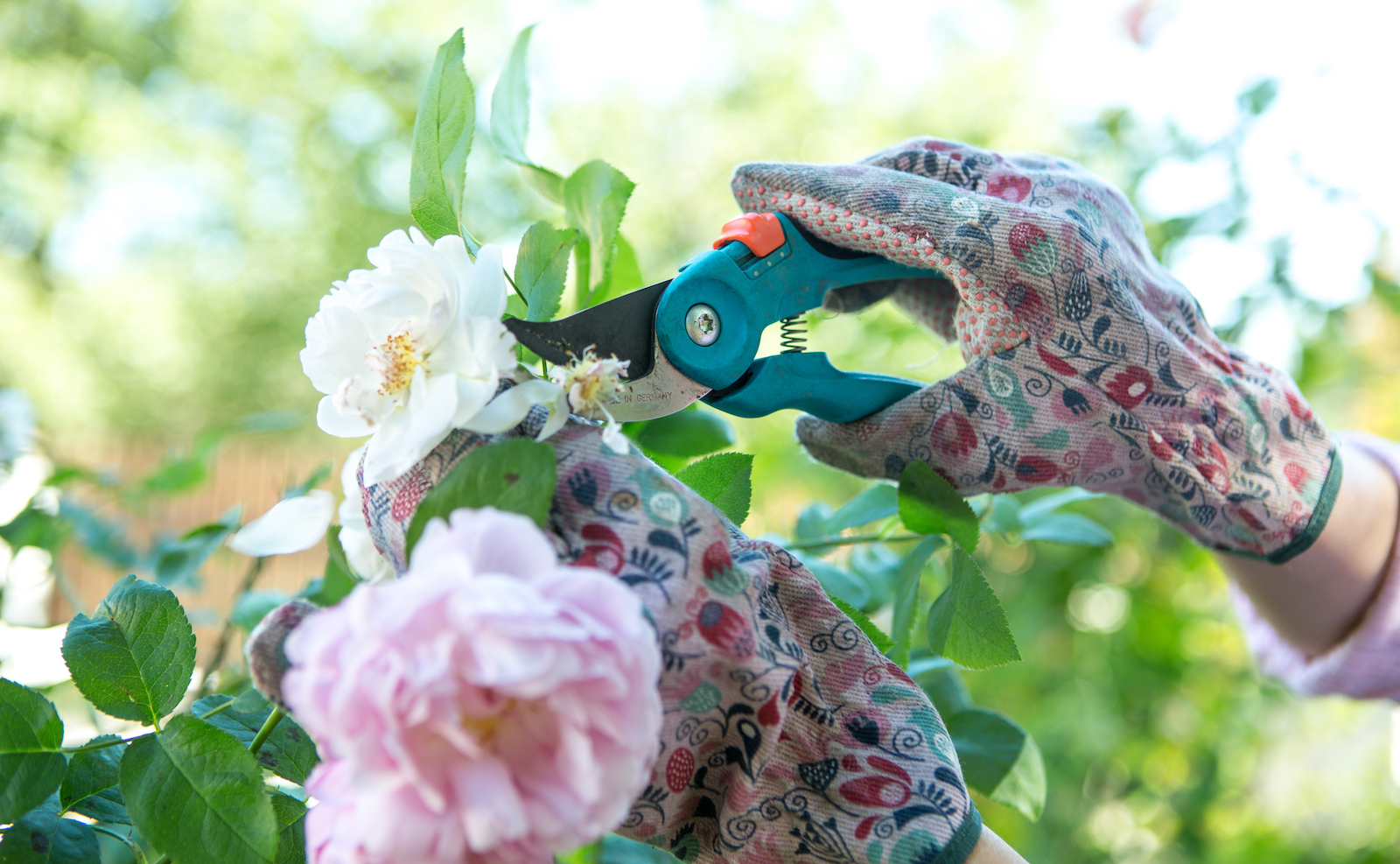 What to prune in spring — experts reveal how to get a lush, full garden
What to prune in spring — experts reveal how to get a lush, full gardenCurious what to prune in spring? We asked gardening experts for their top tips for a luscious, thriving garden
By Danielle Valente Published